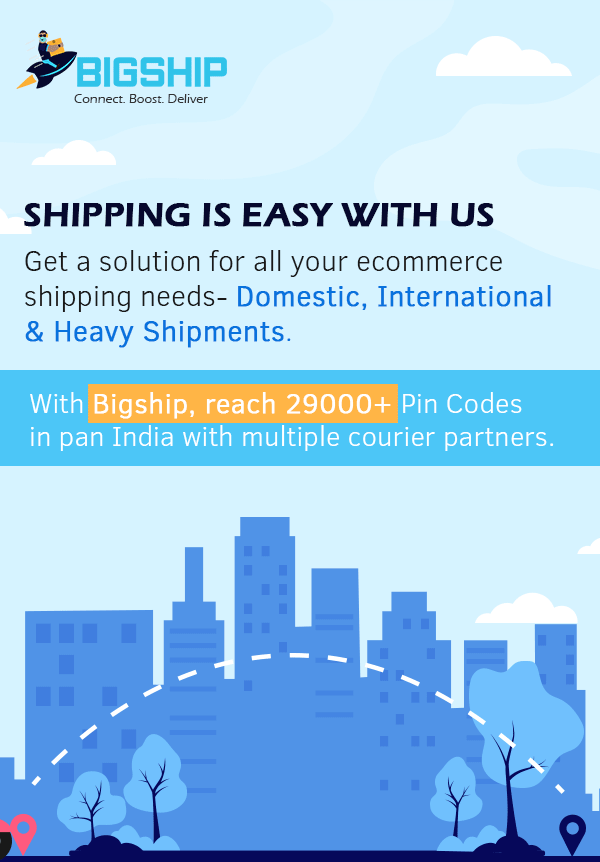E-commerce Business: Meaning, Types, and Advantages

1. What is E-commerce?
2. E-commerce History
3. Working of E-commerce
4. Types of Online Sales Channels
5. E-commerce Payment Methods
6. Types of E-commerce Businesses
7. Advantages of E-commerce
8. Challenges in Starting An E-commerce Business
9. E-commerce Revenue Models
10. How To Start an E-commerce Business?
11. Conclusion
12. FAQs
E-commerce has revolutionized the way businesses and individuals conduct transactions by making it easy to buy and sell products or services online. Whether through apps, websites, or social media platforms, e-commerce offers convenience and accessibility for both customers and sellers. It has opened up opportunities for businesses to reach global markets and provides customers with personalized shopping experiences.
In this blog we’ll explore, what is e-commerce, its history, working, types, advantages, and many more.

What is E-commerce?
E-commerce, or electronic commerce, is the process of buying and selling goods or services over the internet. Whether it’s through an app, an online store, a social media platform, or a marketplace, e-commerce makes transactions possible anywhere with internet access.
E-commerce is simply how businesses or individuals conduct online sales. Common examples include shopping online, paying electronically, auctions on the internet, and even online banking. The main objective of e-commerce for sellers is to boost sales by using digital marketing strategies. This is the core meaning of e-commerce today.
E-commerce History
The history of e-commerce dates back to the 1970s, though what is considered the first e-commerce transaction is still debated. However, the first recognized legal online transaction occurred in 1994 when someone sold a CD to a friend 300 miles away. This marked the true beginning of e-commerce.
By 1995, companies like Amazon and eBay emerged which revolutionized the way people shop. PayPal joined the scene in 1998 and made online payments much easier and safer. Over time, e-commerce became a global phenomenon, and platforms like Shopify, Alibaba, Flipkart, and Etsy have helped businesses of all sizes establish online stores. As technology continued to evolve, so did the online shopping experience, with mobile apps, social media selling, and digital wallets becoming common tools for shoppers.
Working of E-commerce
E-commerce enables customers to make purchases from anywhere, using multiple electronic devices and payment methods. Here’s how an e-commerce business works:
Order Placement: A customer selects a product or service on an e-commerce platform, adds it to their cart, and proceeds to checkout.
Payment Processing: The customer pays using various methods such as credit cards, digital wallets, or bank transfers. Payment gateways securely process these transactions, ensuring confidentiality and efficiency.
Order Fulfillment: The retailer prepares the product for delivery. It can be shipped to the customer’s address, picked up from a local store, or delivered locally.
Shipping & Logistics: Logistics partners handle the shipping and delivery process. They ensure the product reaches the customer in a timely manner.
Supporting Platforms and Tools: Various tools support e-commerce businesses, such as advertising platforms like Google Ads and Meta Ads for promoting products.
Types of Online Sales Channels
Online sales channels give businesses different ways to sell their products and reach a broad range of customers. Here are the main types of online sales channels:
E-commerce Platforms: An e-commerce platform enables businesses to sell their products online through their own website. These platforms provide tools for managing inventory, processing payments, and building a customized storefront. For example, Shopify allows individuals and businesses to sell both online and in physical stores.
Social Selling Channels: Social media platforms like Facebook and Instagram have integrated shopping features that let businesses sell directly to their audiences. These channels are great for small businesses or personal brands looking to reach potential customers without creating a full-fledged website.
Online Marketplaces: Online marketplaces such as Amazon and Etsy are popular online sales channels where businesses can list and sell their products to a larger audience. These platforms are also powerful search engines, often being the first place consumers go when searching for products. Selling on online marketplaces allows businesses to tap into a wide customer base without needing their own online store.
E-commerce Payment Methods
E-commerce businesses offer a variety of payment options to make online purchases easy and convenient for consumers. Integrating multiple payment options allows businesses to give customers flexibility and ensure a smooth shopping experience. Here are some of the common e-commerce payment methods.
Credit and Debit Cards: Using credit and debit cards is one of the most widely used methods for online transactions. E-commerce platforms typically integrate with payment processors to accept credit and debit cards from companies like Visa, Rupay, MasterCard, and American Express.
Digital Wallets: Mobile wallets like Apple Pay, PhonePe, and Google Pay allow customers to store their card information securely and make payments with just a few taps. These services are popular because they offer fast, secure, and convenient checkouts, especially on mobile devices.
Mobile Banking & UPI: In India, mobile banking apps and the Unified Payments Interface (UPI) are becoming increasingly common. Services like Paytm, PhonePe, and Google Pay allow customers to transfer funds directly from their bank accounts.
Cash on Delivery (COD): Some consumers still prefer to pay in cash when they receive their products, especially in regions where digital payments may not be as widespread. COD remains a popular option in countries like India.
Types of E-commerce Businesses
E-commerce businesses come in various forms, depending on who is selling and who is buying. Here are some common types of e-commerce business models:
B2B: In this model, businesses sell products to other businesses. For example, a software company providing tools to businesses or wholesalers selling bulk goods would be B2B transactions.
B2C: Business-to-consumer is the most common type of e-commerce, where businesses sell products or services directly to individual consumers. For example, an online clothing store selling to people browsing on its website falls under B2C.
C2C: Consumer-to-consumer involves individuals selling products or services to other individuals. An example is someone selling a used item on an online marketplace like eBay. As soon as the seller starts selling multiple items regularly, they might transition to a B2C model.
C2B: In the consumer-to-business model, an individual offers products or services to businesses. This can include influencers promoting a company’s brand on social media or freelancers selling their services to companies.
D2C: In direct-to-sell model, brands sell directly to their customers without intermediaries, such as retailers. Many of these businesses operate online and in person as well.
Advantages of E-commerce
Starting an e-commerce business comes with several advantages. It not only lets you launch quickly, but also opens the door to a global customer base seeking easy and convenient shopping options.
Effortless Shopping for Customers: E-commerce allows people to shop from any location, using any device, at any time. They can easily find your brand, compare products, and choose payment methods that suit them all without going to an offline store.
Global Reach: An online store can reach customers across the world. With the help of logistics and shipping partners, businesses can deliver their products to international markets, even without a physical presence in those locations.
Personalized Shopping Experience: E-commerce businesses can use customer data to offer personalized shopping experiences, such as custom product recommendations or loyalty programs. This helps in building customer loyalty.
Lower Operational Costs: Running an e-commerce store generally costs less than operating a physical store. Business owners avoid expenses like rent and utilities, and some models like dropshipping require minimal upfront investment.
Challenges in Starting An E-commerce Business
Starting an e-commerce business presents exciting opportunities, but it also comes with its own set of challenges. Some of the common challenges are mentioned below.
Intense Competition: E-commerce businesses face stiff competition, with numerous companies targeting the same customer base. To stand out, businesses must offer something unique, whether through product quality, pricing, or superior customer service.
Security Issues: One major challenge in e-commerce is ensuring data security. Customers need to feel confident that their personal and financial information is protected when shopping online. It’s essential to use secure payment gateways and encryption tools like SSL certificates to maintain trust.
Shipping Complications: Shipping plays a crucial role in customer satisfaction. Efficient and reliable delivery is necessary to keep customers happy, as delays or issues can harm the brand’s reputation.
E-commerce Revenue Models
When starting an e-commerce business, deciding how to generate revenue is essential. There are several revenue models that online businesses use, each with its own approach to making money. Here are five popular e-commerce revenue models:
Sales Model: This model is the most common model in e-commerce. It involves selling products or services directly to customers for profit. Both online and brick-and-mortar businesses use the sales model.
Subscription Model: In this model, customers pay a recurring fee for continued access to a product or service. It’s increasingly popular, particularly among brands offering subscription boxes or digital services, ensuring steady and predictable income.
Advertising Model: This is often used by online creators, influencers, and media platforms. Businesses generate revenue by partnering with other companies for advertising, whether through promoted content or ads displayed on their platforms.
Affiliate Model: Creators and influencers with large followings often use this model. By promoting products from other companies, they earn a commission on any sales made through their affiliate links.
Transaction Fee Model: In this model, companies make money by charging a fee for processing transactions. Payment gateways, e-commerce platforms, or marketplaces often apply this model by taking a small percentage of each sale.
How To Start an E-commerce Business?
Starting an e-commerce business is an exciting journey, but it requires careful planning and execution. Here’s a simple guide to help you start your e-commerce business.
Come Up With an Idea: The first step is to identify the product or discover the right audience for your product. You should look for the market gaps to find where your business can thrive.
Conduct Market Research: Analyze your competitors thoroughly. This will help you understand market trends and consumer demands.
Create a Business Plan: A solid business plan is crucial, especially if you intend to seek funding. A business plan outlines your goals, strategies, and financial projections.
Build Your Brand: Choose a business name, design a logo, and establish your brand’s identity. Set clear brand guidelines that reflect your mission, values, and tone.
Set Up Your Online Store: Select an e-commerce platform that suits your business needs. Customize your site with your branding and add product listings to start selling.
Make a Shipping Strategy: Choose a shipping partner that ensures smooth deliveries to your customers.
Create a Marketing Plan: Set clear marketing goals and decide which advertising channels to prioritize. You can use this plan to attract customers and grow your sales.
Launch Your E-commerce Store: Once everything is in place, launch your business and start promoting your products to your target audience.
Conclusion
E-commerce continues to transform how we shop and do business by providing convenience, global reach, and a personalized experience. Whether you’re a small startup or an established brand, utilizing e-commerce opens doors to endless possibilities. With evolving technology and diverse online sales channels, businesses can effectively connect with customers worldwide.
FAQs
Ques: What is E-commerce?
Ans: E-commerce is the online buying and selling of goods or services. It allows businesses and consumers to make transactions online using websites, apps, or social media platforms.
Ques: Name the 3 types of E-commerce.
Ans: 3 types of E-commerce businesses are:
- B2B
- B2C
- D2C
Ques: Give an example of E-commerce.
Ans: An example of e-commerce is Amazon, an online marketplace, where customers can purchase a wide range of products, from books to electronics. Shoppers browse items, add them to their cart, and make secure payments online. The products are then shipped to their homes, offering a convenient, hassle-free shopping experience.




